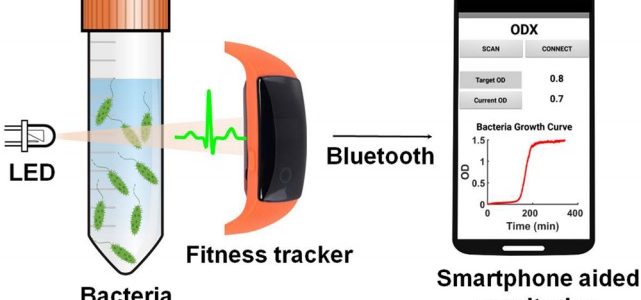A couple of weeks ago we covered MicrobeMeter. At $420 it’s not exactly pennies, but you can buy it pre-built or as an easy DIY kit. For a similar price, we also covered a user friendly low-cost turbidostat. But now we are aware that there is a cheaper option. A much cheaper option.
Ganga C. R. Devarapu contacted us about a solution that measures Turbidity or OD (Optical Density) for just $25, by hacking apart a cheap Heart Rate Monitor. Paraphrasing, Devarapu reports:
The generic fitness trackers usually contain a microcontroller, BLE radio, photodiode, rechargeable battery circuit all stuffed in a tiny package. Therefore, the entire device can cost less than $25 and this fitness tracker based device, ODX, can be used as the cheapest continuous OD meter.
The paper by Venkata Yallapragada, Uday Gowda, David Wong, Liam O’Faolain, Mark Tangney, and Ganga Devarapu describes how to use a phone app and a hacked heart rate monitor for effective turbidity measurements. The project has a GitHub, and both the paper and the GitHub have a Bill of materials, detailed build instructions, STL files for the 3D printed enclosure along with a quote for commercial printing, and the app and the firmware necessary. The quote is a pretty cool touch to make this more accessible to those without 3D printers, but it’s really the detailed pictures of the heart monitor disassembly and firmware flashing process that make this project so approachable.
And for those of you who don’t run these sorts of experiments, and are wondering what this is all about, let us paraphrase Devarapu to explain why this equipment is helpful:
Bacteria are heavily utilized and researched. Bacteria present a cheap and easy scalable platform for synthesis of a wide range of biological products. During the production of biological products it is common to perform certain portions of the protocol at prescribed Optical Densities. To do that you need to continuously monitor the bacterial growth.
And that’s what these sorts of devices do. Now for just $25.
